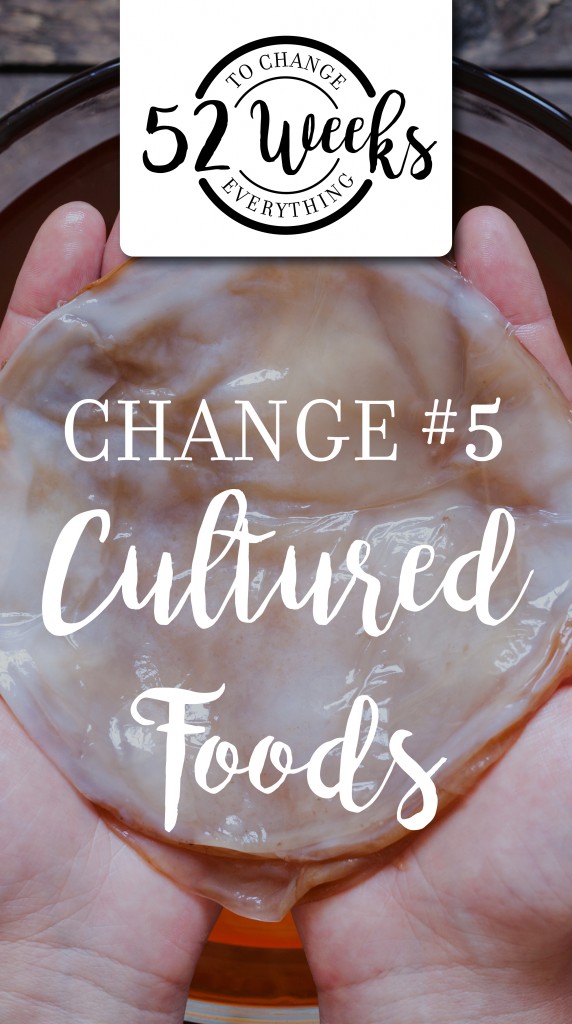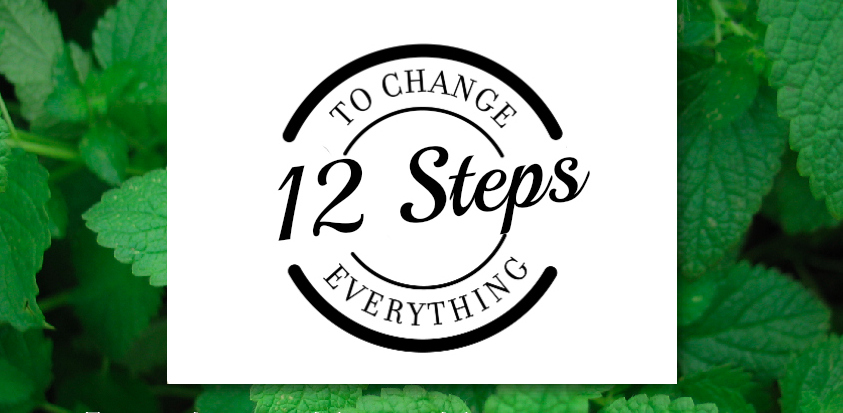Do you eat “cultured” food?
By “cultured”, I mean food that has been fermented in a way to develop- or culture- beneficial bacteria, yeast and other organisms that will enhance health.
Our favorite examples of cultured foods are:
- yogurt
- kefir
- sauerkraut and lacto fermented vegetables
- lacto fermented juice
- kombucha tea
Cultured food is our dietary source of “probiotics”. Probiotics are living bacteria and yeast that are beneficial for health. Probiotics have become a popular topic in the health world, both holistic and allopathic because of growing research to prove their benefits. We recommend getting probiotics from food and also taking a probiotic supplement daily. Probiotics not only support digestive health, but also have been shown to benefit almost every other area of health including immunity, allergies, weight management, behavior and clear skin!
Our modern era has mostly rejected the practice of fermenting and consuming cultured foods, as traditional cultures around the globe have done for centuries. For many years we considered living bacteria and organisms in food as disgusting and even dangerous, as I mentioned in our milk post regarding pasteurization. The truth is that traditional cultures knew something the modern world didn’t understand for a long time. Those fermented and cultured foods contained one of nature’s greatest health elixirs: billions of living microscopic organisms called probiotics.
We need living bugs in our body
Our bodies need a healthy, thriving population of beneficial organisms to not only survive, but to thrive. Today the scientific community is (slowly) gathering evidence to prove the benefits of living bugs in our body. Here is a list of published research on probiotics:
- In this report, “Joint FAO/WHO Expert Consultation on Evaluation of Health and Nutritional Properties of Probiotics in Food Including Powder Milk with Live Lactic Acid Bacteria“, it was concluded that “the health benefits for which probiotics can be applied include conditions such as gastrointestinal infections, certain bowel disorders, allergy, and urogenital infections, which afflict a large portion of the world’s population. The application of probiotics to prevent and treat these disorders should be more widely considered by the medical community.”
- Probiotics help maintain treatment of Crohn’s Disease
- High-dose probiotic and prebiotic cotherapy can be safely and effectively used for the treatment of active Crohn’s Disease.
- Benefits of probiotics for Irritable Bowel Syndrome
- Probiotics may inhibit the growth of gastric cancer cells
- This report confirms probiotic benefit for adult and infant diarrhea, intestinal immunity, improvement of mucosal lining, and many other substantial health benefits
- Probiotics may be therapeutic for treating obesity
- Prebiotics may indeed prove to be a clinically beneficial dietary supplement, in the context of novel nutritional strategies for the management of gastrointestinal and systemic conditions.
- This review of multiple probiotic studies concludes, “Lactase deficient subjects benefit from a better lactose absorption after ingestion of yoghurt compared with milk and from milk added lactase, whereas ingestion of unfermented acidophilus milk does not seem to improve lactose absorption. The majority of studies support that lactic acid bacteria alleviate bacterial/viral induced diarrhoea, especially in infants, while the effect on antibiotic associated diarrhoea is less clear. Experimental studies indicate an effect of lactic bacteria on human cell cancer lines, but clinical evidence is lacking.”
- Yogurt dramatically improves lactose digestion
- Probiotics shorten acute diarrheal illness in children
- This study proves that probiotics consumed do, in fact, attached to the mucosal lining of the colon, and shows (to me at least) that probiotic consumption must be continual to be effective
*There are many more studies available on this topic, but many are not in a free format where we can all view the study’s conclusions.
For my researchers out there, I will inform you that there is still a ton of credible research that needs to be done on probiotics. While many studies conclude significant benefits of probiotic use, many studies have shown either no benefits or insufficient evidence of benefit, as this Journal of Nutrition article points out. I’ve spent quite a bit of time sifting through the published studies on probiotics, many of which show inconclusive evidence either way, and I didn’t find any negative results from probiotic treatment. It seems the problem is that studies are being done on one single strain of bacteria or yeast at a time, with the intention of identifying one specific benefit. This goes against the traditional nature of fermenting and culturing foods, at the mercy of the naturally occurring organisms in the environment and the natural proliferation of those organisms. Since there are so many different known probiotic strains, and so many living organisms to manage in application (we’re talking multiple billions of organisms in one single dose), controlled studies seem so tedious or even impossible with scientific method standards. It is also important that companies producing probiotic foods, beverages and supplements do not make unsubstantiated health claims on their labels or marketing publications before proper studies conclude such results.
There is enough evidence, however, to show that probiotics do benefit human health. This area of research will continue to unfold for a long time. I might humbly add that their benefit in my personal and family’s health, as well as in my clinical nutritional therapy practice, are strong evidence for my recommendation!
Antibiotics are NOT always your friend
Antibiotics and anti-bacterial products kill your body’s valuable beneficial organisms, yet people think taking antibiotics and using antibacterial hand gel frequently is a good health practice with no adverse affects. WRONG.
A great frustration of mine is that modern people jump at the chance to take an antibiotic. They might get a sore throat and a sniffle and ask their doctor- without an actual visit- to prescribe a powerful antibiotic. Not only is a doctor supposed to diagnose illness, but they are supposed to determine the actual illness and identify which antibiotic to use, if necessary.
One of the most ridiculous things people do is take antibiotics when they have symptoms of a viral infection. Antibiotics are for bacterial infections, not viral infections. Most common contagious illnesses are viral, not bacterial. It’s even more ridiculous when doctors feel they have to prescribe the antibiotics just to make their (customer) patient happy. That’s messed up, but it’s true and common.
By taking unnecessary antibiotics for viral infection, you are basically taking a sugar pill that kills your body’s resources of beneficial “probiotic” organisms, which happen to be your best defenders against that viral infection!
Antibiotic resistance should worry you
Antibiotic resistance is a very REAL and scary dilemma we have created by overusing antibiotics and antibacterial products. I’ve known of a few people in my personal circle of family and friends who fought serious bacterial infections that were antibiotic resistant, as well as people who have recurring infections and declining immunity due to antibiotic overuse and resistance.
Of course antibiotics are sometimes necessary and we are extremely grateful for their availability! If the body has maintained its defenses by avoiding regular use of antibiotics and antibacterial products, and the specific bacteria and appropriate antibiotic is identified by the doctor, then that antibiotic will likely work successfully against the infection. (Thank you, Jesus!)
My advice is to be very educated before you choose to use antibiotics, and be sure it is absolutely necessary. Avoid antibiotics and antibacterial products as much as possible, and when you must use them, load up with a ton of probiotics in your diet and supplements after your treatment!
Here is some further reading to scare you into ceasing your use of antibiotics!
- Kids Health: Danger of Antibiotics
- Pediatrics publishes study concluding that antibiotic treatment should decrease
- The CDC advises against unnecessary antibiotic use and warns of antibiotic resistance
- Consumer Reports warns of danger of antibiotic overuse and antibiotic resistance
- 5 Unintended Consequences of Antibiotic Overuse
Culture your diet
Now that you understand the importance of consuming probiotics in supplements and food, lets discuss those favorite cultured foods I mentioned at the beginning of this article.
Yogurt
Not all yogurt is created equal. In fact the majority of yogurt in the market is useless waste, especially if your goal is to add viable probiotics to your body. Here’s a checklist when choosing yogurt:
- whole milk (read the ingredients and make sure there isn’t low fat or nonfat milk or powders in there)
- organic: avoid the antibiotics, hormones, pesticides and other chemicals found in commercial dairy
- no flavors or sugar- commercial yogurt is typically extremely high in sugar, but even low sugar yogurts should be avoided. Sugar will “eat” the beneficial bacteria and steal away the probiotic benefits of the yogurt before you even get to eat it. However, without sugar the yogurt will continue to culture and the beneficial bugs will proliferate.
- It should be sour- sour means it’s been well cultured. The more sour, the better.
- Greek, Bulgarian and European are our favorite yogurt styles. Strauss is our favorite brand, but we’ve used many others. We love the artisan brands that are dedicated to making excellent yogurt using traditional methods and pure dairy sources.
- We eat yogurt daily, typically as part of our smoothies.
Of course you can make your own yogurt! It’s actually very simple once you have the starter culture. You can even steal that starter culture from your favorite quality store-bought yogurt! Here is more information about making your own yogurt the best way.
Kefir
Kefir is a beverage that uses a yeast probiotic culture, called kefir grains, to develop a fermented beverage out of milk or water. I’m not a fan of most kefir products available at grocery stores because, like yogurt, most are sweetened and use reduced-fat dairy. Also, like yogurt, kefir is extremely easy to make at home. Here are links for making your own kefir using water or milk.
Lacto Fermented Vegetables, Fruits and Juice
We can culture and ferment almost any fruit or vegetable. I’ve written a few articles on this:
- Homemade Lacto-Fermented Pickles
- Basic Guide to Lacto-Fermenting Vegetables and Fruits (recipes and video)
- How to Lacto-Ferment Any Juice
Lacto-fermenting juice often gives it a natural bubbling effervescence and takes away some of the sweetness of the juice. My kids love lacto-fermented juice when I make it- a fantastic alternative to soda.
Kombucha Tea
Kombucha is extremely popular these days…almost cultish. Ever since Lindsey Lohan claimed she was intoxicated from it, kombucha tea has definitely become “high profile”. That’s not a bad thing, though! I love that people have demanded as supply of kombucha and I can find it now in almost any grocery store!
What is kombucha? Basically it’s a fermented (or cultured) tea that cultures a unique form of probiotic organisms. Kombucha is a traditional tea that uses a mother starter, or “scoby”. Kombucha is a pleasantly tangy and bubbly not-too-sweet tea that is often flavored at the end of the brewing process to give it an even more interesting flavor.
Head over to your favorite health store or quality grocery store and look for kombucha. You may not love the taste at first but it grows on you.
You can also make kombucha easily it at home, and for WAY less of a cost! We make kombucha and my husband has come up with fun flavor options like rosemary-lemon or cinnamon-apple. Here’s more information about getting started with kombucha.
Sourdough
Nothing beats homemade bread, and homemade sourdough bread is even better. Recently my husband started making kombucha and bread regularly and it is such a wonderful gift. (I tend to eat bread in the mornings only…in case you’re wondering.) The live cultures in sourdough are especially good for digestion and they “pre-digest” the flour as it ferments through the bread dough, unlike most yeast breads.
Click here to see our Magic Sourdough Boule recipe.
 Are you ready for some culture?
Are you ready for some culture?
Don’t be overwhelmed if cultured food is new to you. Because cultured foods are gaining popularity, you will find many options in a health food store or good grocery store. Try incorporating one new cultured food at a time into your regular food routine.
Learning to make your own cultured foods is WAY cheaper than store bought and can be a very rewarding practice. When you culture foods at home, you learn time-honored practices of keeping “starters” or “mothers” alive through every “generation”, or every batch of the cultured food you are making. For instance, San Francisco’s Boudin Bakery famously touts that every loaf of their bread is soured using part of the same original sourdough “mother” starter.
Because you use a little of the last batch to start the next, culturing food is a lot like keeping a pet alive…however if it goes bad you can just throw it out and start over. Nothing beats the reward of eating your own sourdough bread fresh out of the oven, or sipping your own uniquely crafted kombucha tea, or watching your kombucha scoby make a “baby”, or watching your cute little kefir grains grow. It’s worth the effort and it’s a fun hobby.
What are your favorite cultured foods? Any cultured food stories to share? For instance, when I was making the raspberry orange fermented juice on this page, I fermented it a little too long and it exploded all over my kitchen- from floor to ceiling- when I opened it.


